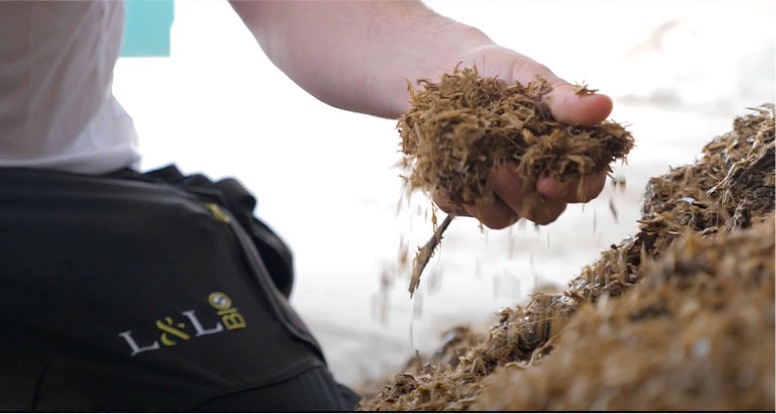FERTILIZERS FOR SUSTAINABLE
AGRICULTURE FROM BIOMETHANE
In this historical phase, in which the ecological transition has become the planet’s inescapable priority, the agricultural production system and entire agri-food chain are called upon to contribute significantly to sustainable development, through efficient and circular use of resources and the conservation of biodiversity. Targeted investments are needed more than ever on research and the application of new technologies. Various innovations are making it possible to improve the quality of products and production models, significantly contributing to reducing environmental impacts on the soil ecosystem and global warming.
At L&L, we have embraced the climate and environmental challenges that we are all facing, setting ourselves the goal of developing high quality biofertilizers by exploiting biomass used for the production of quality biomethane.
Our biofertilizers contain living microorganisms that can improve the quality of land, prevent the excessive depletion of resources, and help to maintain soil’s fertility and ability to nourish crops.
At our biomethane production plants, we process agro-zootechnical by-products, mainly animal manure, triticale and sorghum, transforming them into biogas and digestate. The digestate, that is, the portion of residual biomass undigested or partially digested at the end of the anaerobic digestion process, when appropriately treated, has excellent amending and fertilizing properties. The fertilizer thus obtained helps increase the quality of crops, and preserve soil over both the short and long term. The agronomic use of the digestate, which is hygienically safe, biologically stable, and rich in important nutrients, such as nitrogen, phosphorus and potassium, is a valid sustainable alternative to synthetic fertilizers.
FERTILIZERS, PAST & FUTURE

One of the great challenges facing humanity is to feed a world population that is growing year after year. Famine continues to affect over 800 million people worldwide. Over 149 million boys and girls under the age of five suffer from growth disorders, such as rickets and short stature.
The agricultural production system began heavily investing in the so-called “Green Revolution” as far back as the 1960s. The Green Revolution, which was launched in Mexico in 1944 by Nobel Peace Prize winner and American scientist Norman Borlaug, had the aim of reducing areas at risk of famine, and has made it possible to increase production yields per hectare thanks to the use of hybrid plants obtained from the crossing of different plant species, extensive use of fertilizers and pesticides, and particular irrigation techniques. These innovations, in turn, made it possible to meet the growing demand for food of the ever-increasing world population. However, industrialized agriculture practised on the basis of this model has led to a significant increase in the consumption of water, energy supplied by fossil fuels, and chemical additives, in the form of fertilizers and pesticides, causing heavy impacts on the environment and on human and animal health.One of the great challenges facing humanity is to feed a world population that is growing year after year. Famine continues to affect over 800 million people worldwide. Over 149 million boys and girls under the age of five suffer from growth disorders, such as rickets and short stature.
The agricultural production system began heavily investing in the so-called “Green Revolution” as far back as the 1960s. The Green Revolution, which was launched in Mexico in 1944 by Nobel Peace Prize winner and American scientist Norman Borlaug, had the aim of reducing areas at risk of famine, and has made it possible to increase production yields per hectare thanks to the use of hybrid plants obtained from the crossing of different plant species, extensive use of fertilizers and pesticides, and particular irrigation techniques. These innovations, in turn, made it possible to meet the growing demand for food of the ever-increasing world population. However, industrialized agriculture practised on the basis of this model has led to a significant increase in the consumption of water, energy supplied by fossil fuels, and chemical additives, in the form of fertilizers and pesticides, causing heavy impacts on the environment and on human and animal health.


On the one hand, plant biotechnology focuses on the identification and manipulation of plant species in order to obtain cultivatable plants that are more resistant to diseases and abiotic stresses, such as droughts, salinity, extreme temperatures, and pollutants. On the other hand, organic agriculture has among its objectives the most efficient and sustainable use of available resources, including water, soil and energy, and the use of safer, more natural and more ecological fertilizers and plant protection products. In this regard, it is important to emphasize the enormous importance of the diversity of microorganisms that are associated with the roots of plants. This microbial community, made up of hundreds of thousands of different species, is fundamental for the health and nutrition of plants, as it has a significant influence on the interactions between roots, minerals, organic compounds and solutes, and, therefore, on the biogeochemical cycle of elements.
The development of new biofertilizers came about as a response to the search for new products that are more sustainable and respectful of the environment and human health. The research activity of the sector is oriented towards new broad-spectrum biofertilizers that allow for more competitive positioning in a rapidly growing market. Proposed as an alternative to the products of large multinationals is the rational design of probiotic formulations specific to local areas and crop types.
